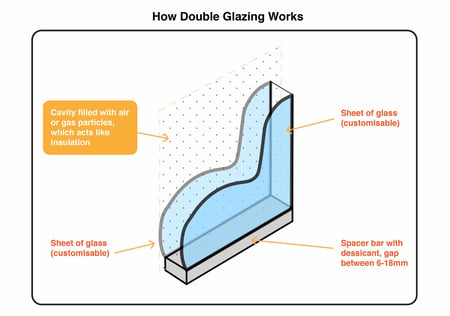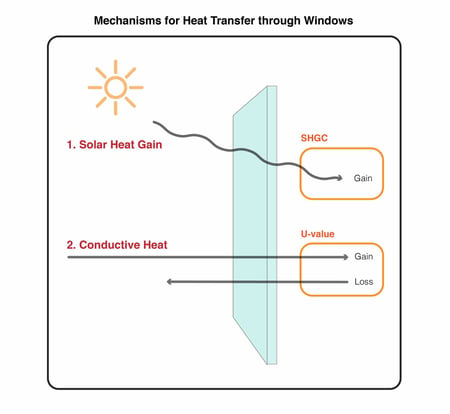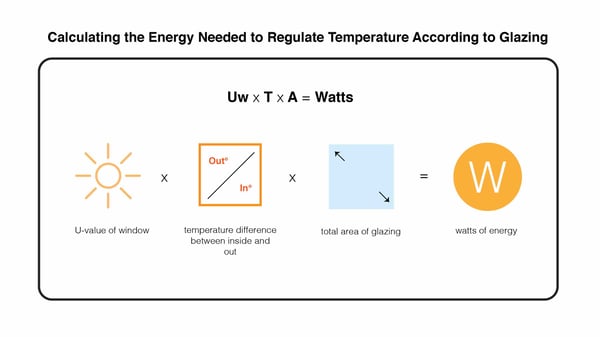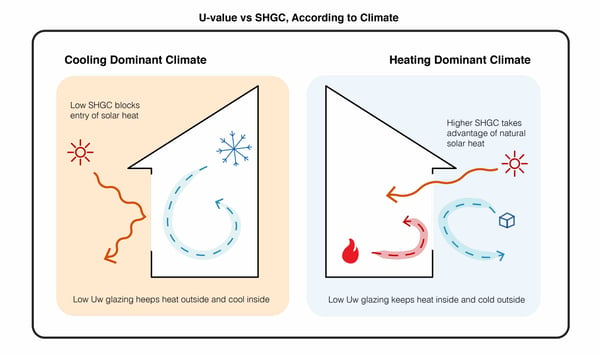Announcing our Participation in the NatHERS for Existing Homes Trial
FOR IMMEDIATE RELEASE
Sydney, 11 March 2025
Certified Energy is pleased to announce our...
Windows can have a drastic effect on the thermal performance of a building. Up to 40% of a home’s heat can be lost through conduction or radiation at the window, and up to 87% of its heat can enter through solar gain. This unwanted heat flow can be devastating for the energy efficiency of any project.
Ways to reduce these unwanted heat transfers include considering passive solar principles like orientation, shading, insulation and thermal mass, and choosing the right type of glazing.

Double glazing, or Insulated Glass Units (IGUs) are the best way to improve the insulating properties of the glazing itself. This type of window combines two panes of glass with a metal or polymer spacer between them. Since the cavity between panes is fully sealed, spacers usually contain a desiccant to prevent moisture build up.
It’s the space between the glass that provides the benefits of this glazing system- the pocket of air (or gas, such as argon, which has low conductivity) acts as a buffer and resists heat flows. This can reduce solar heat gain in Summer and decrease heat lost in Winter. IGUs with a difference in thickness between the two panes can greatly minimise the intrusion of medium to high frequency noise into a building. Finally, IGUs add an extra layer of security as the two panes are more difficult to break than one.
Older buildings with single glazed windows can also benefit from the same principles- secondary glazing can be added on to create an insulating and noise reducing air gap. This procedure involves attaching a secondary frame or operable sash to the inside or outside of an existing window, which holds a sheet of glass or transparent acrylic. Though not as effective as a manufactured double glazing windows, secondary glazing is still a great investment for both thermal and acoustic comfort.
Double glazing window properties where the air gap insulation between the glass is filled with gas. allow the the reduction of heat loss or gain by up to 30% compared to single glazing windows.
In order to optimise thermal performance and energy efficiency, it’s important to consider the two heat transfer mechanisms of conduction and solar gain in the context of your climate, and customise your glazing to site specific needs.

U-value (Uw) indicates the heat conductivity of a glazing system, including the glass, seals, frames and spacers. A window that readily transfers heat has a high U-value, whereas low U-value windows have greater insulating value, and is what buildings should aim for.
To measure the effects of a reduced U-value, you can use this formula:
Uw x T x A = watts (W/m2K)
If your building has 50m2of glazed doors and windows with clear single glazing and aluminium frames (U-value of 6.2), on a night when it’s 10° colder outside, the heat loss would be about: 6.2 x 10 x 50 = 3100W which is a huge amount of energy that is required to keep the house warm. However, if you choose a timber window with double glazing (U-value of 3.0), you can halve the amount of heat lost and energy required to heat the space.

The other factor to consider is the flow of heat from direct sunlight through a glazing system. It is expressed as a number between 0 and 1, and measures the fraction of solar radiation that passes directly through a window, or released inward after being absorbed by the window. A lower SHGC means that a window admits less solar heat, and is therefore more effective. However, there are times when a higher SHGC window is more efficient - when the weather is cool and heating becomes necessary, allowing some solar radiation to enter the building can reduce the need for artificial heating. This is particularly useful for any north facing glazing.
The performance of double glazing depends on several factors: the properties of each of the sheets of glass, the width and gas content of the air gap, and the material of the frame and spacer. The thickness of the glass does not actually significantly impact heat transfer, but it does improve noise transmission and strength.
Smart glass or Low e glass is a glass construction material which can alter light transmission properties when voltage, light or heat is applied. The glass changes from translucent to transparent and vice versa.
Even though the smart glass option has practical needs and aesthetics features, there is a problem in noise reduction and it's most effective in areas where solar heat enters the home directly.. Double glazing windows can help reduce external noise and it is more effective in areas where heat transfer occurs via external environment.
Australia can be divided roughly into two regions: cooler climates (Melbourne, Hobart, Canberra) where heating is more dominant, and warmer, northern climates where cooling is the priority.

Take a look at these simple guides from the Australian Glass and Window Association for more information on optimising double glazing for your region:
According to the YourHome, the Australian Government’s guide to environmentally sustainable houses, the cost of cooling and heating your home and the cost of windows are very closely related. Energy efficient windows can be a great investment toward reducing your annual energy bills, particularly during peak times.
Double glazing, especially when combined with energy efficient glass tailored to your climatic needs, can be the most efficient way of reducing U-value and optimising SHGC. IGU's combine all the benefits of windows with features that will increase thermal comfort while reducing ongoing cost. This type of glazing is an investment toward thermal performance, noise levels, security and the environment, and should be considered every time glazing is needed.
If you want to see for yourself, the Australian Window Association has created a free tool that can compare different specifications of energy efficient glazing and calculate the most economical system (surprise, it's double glazing!)
Here at Certified Energy, our aim is to give you the benefit of our years of extensive experience by delivering to you the best energy solution in a cost effective way.
We pride ourselves on delivering innovative sustainable solutions aimed at reducing material cost, increasing property values and providing healthier environments for occupants.



FOR IMMEDIATE RELEASE
Sydney, 11 March 2025
Certified Energy is pleased to announce our...